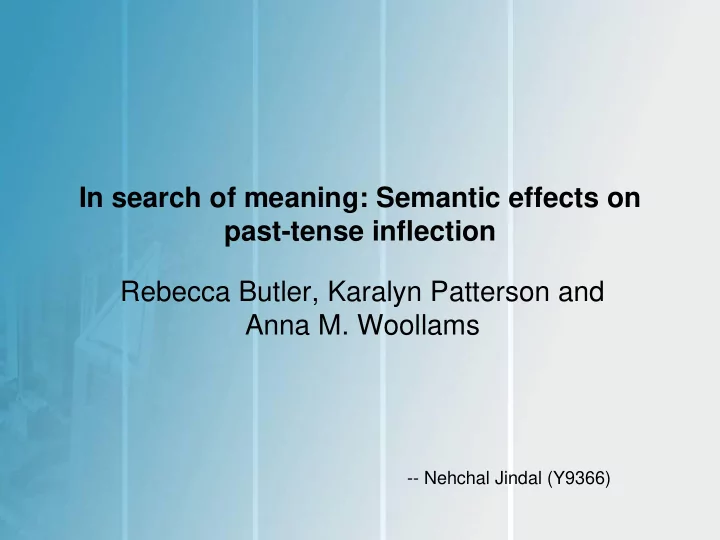

In search of meaning: Semantic effects on past-tense inflection Rebecca Butler, Karalyn Patterson and Anna M. Woollams -- Nehchal Jindal (Y9366)
Basics • Past-tense inflection (or simply inflection) – Given present-tense verb, convert it to its past-form • Eg. Sit -> sat, walk -> walked Types of verb Exception Regular All which are not regular (past-tense formed by adding -ed) Eg. Eg. • Sing->sang • Walk ->walked • Go->went • jump->jumped • Read->read • Teach->taught In English, 86% verbs are regular
Known cognitive behaviors • It takes more time to inflect exception verb than regular verb. • Parkinson disease (damage of frontal lobe) impairs ability for regular verb inflection but exception verb inflection.
How does human mind inflect? • Model that could explain how both regular and exception verb are processed by mind to come up with past-tense. • Two contrasting models • Dual- mechanism “word -and- rules” • Single mechanism connectionist model
Dual-mechanism model • Regular verbs are inflected by rule (add -ed) – Procedural, in frontal lobe • Exception verb inflections are stored in lexicon (dictionary). – Imperative, in temporal lobe • The rule is applied by default but if stored inflected form of verb is retrieved, rule application is blocked.
Single mechanism connectionist model • No distinct subsystems for regular and exception verbs • Present-tense mapped to past-tense via system of distributed phonological and semantic representation. • Suggests that phonology primarily impacts regular verb inflection and semantics impacts exception verb inflection.
Experiment • Aim: To show semantics impacts exception verb inflection more than regular verb inflection • Imageability: property of a word to be visually imagined. • Drink – more imageability • Deal – less imageability
Figure: Mean reaction times (RTs) as a function of regularity and imageability
Thank You
Recommend
More recommend